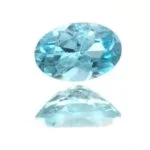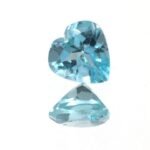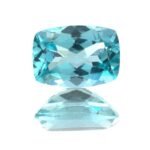Apatite: The Deceptive Gemstone
Overview
Apatite derives its name from the Greek term meaning “to deceive,” aptly named as it was historically mistaken for other minerals. While it might not be a household name in the jewelry world, its relative obscurity and affordability compared to the likes of Paraiba Tourmaline have endeared it to collectors. Historically, apatite’s significance lay in its role as a phosphate source for fertilizers. Given its soft nature, it’s best suited for earrings, pendants, and brooches. If chosen for rings, it demands extra caution to prevent damage.
Composition and Appearance
Apatite’s chemical formula is Ca5(PO4)3(F,Cl,OH), and it’s a frequent accessory mineral found in a range of metamorphic, igneous, and sedimentary rocks. Notably, the phosphates present in bones and teeth belong to the apatite group. The gem showcases a spectrum of colors, from green and blue-green to yellow, brown, and violet. The recent discovery of a neon blue-green variant from Madagascar has reinvigorated interest in this gem.
Origins
Major deposits of apatite are located in Brazil, India, Kenya, Madagascar, Mexico, Myanmar (Burma), Norway, Sri Lanka (Ceylon), South Africa, and the United States.
Properties and Enhancements
With a rating of 5 on the Mohs scale, apatite is a delicate gemstone, making it less suitable for rings or items subjected to regular wear. While the green variant typically remains untreated, blue apatite often undergoes heat treatment to intensify its hue. Although there’s no lab-created counterpart for apatite, there are simulants on the market that mimic the gem’s distinctive color.



